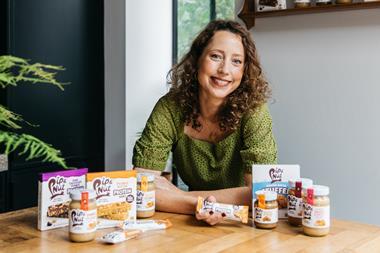
Advertising watchdogs have backtracked over how companies should interpret the government’s looming HFSS advertising clampdown, after campaign groups claimed the strategy was being watered down to allow junk food ads to continue unchecked.
The Grocer revealed in January last year that there was uproar over suggested guidance from the Advertising Standards Authority (ASA), which would allow HFSS brands to continue to advertise before the new 9pm watershed and online, provided the ads did not specifically identify HFSS products.
Health campaign groups claimed the watchdog’s proposals had “loopholes big enough to drive a Coca-Cola truck through”.
However, today the ASA, which has been appointed as the frontline advertising co-regulator by Ofcom, issued a new interpretation of the rules. Due to come into force in October, it revealed major changes to its proposed guidance, which look set to close many of the loopholes.
ASA ’revised guidance’
“The proposed guidance advised, with qualifications, that ads that feature branding that relates to a range of entirely ‘less healthy’ products would fall outside the scope of the restrictions if there were no depictions or references to a specific less healthy product in the ad,” said the statement from the ASA and the Committee of Advertising Practice (CAP).
“As a result of consultation responses and further legal advice, we now consider that the guidance should be more circumspect.
“Our revised guidance is likely to clarify that even if your ad does not explicitly refer to or feature a LHF (less healthy food) product, it may still be restricted under law, where persons in the UK could reasonably be expected to be able to identify your ad as being for a LHF product or LHF products.”
The move was welcomed by health groups.
“This government has strongly committed to protecting children from junk food advertising, and we need to see this policy come in as planned in October 2025: the food industry has already had five years to prepare,” said Katharine Jenner, director of the Obesity Health Alliance.
”The law clearly states that ‘if persons in the United Kingdom (or any part of the United Kingdom) could reasonably be expected to be able to identify the advertisements as being for that less healthy product’, then such adverts must not appear on television before 9pm or on paid online media at any time.”
Campaigners expressed concern that the ASA and CAP were now suggesting another consultation period over its plans, which they fear would allow further scope for the plans to be watered down.
“It is deeply frustrating that the ASA has decided to put us all – industry, public and health charities alike – through yet another round of unnecessary consultation, especially when this one closed back in February 2024,” added Jenner.
“We strongly urge the ASA to expedite this process, prioritising the 22% of children living with excess weight – children who are on a path toward poor health in the future – over the interests of food and drink companies profiting from pushing unhealthy products on our children.”
HFSS brand exemption
The ASA and the CAP have consulted on proposals for the HFSS clampdown on regulated TV services between 5:30am and 9:00pm, those included in Ofcom-regulated on-demand programme services between 5:30am and 9:00pm, and those placed in paid-for space in online media at any time.
The CAP said it was now preparing a revised version of guidance, which it said “will involve a further process of public consultation in the coming weeks, barring any unforeseen developments”.
“We will work with Ofcom and the ASA to complete the governance process,” said a CAP spokesman. “In accordance with the Act, this must involve consultation with the secretary of state. We aim to publish the final guidance in the spring, again barring any unforeseen developments.”
The Food and Drink Federation (FDF) has described today’s update as ”incredibly disappointing”, adding that the industry is ”once again facing delays to the publication of the details we need regarding the implementation of this legislation”. A spokesperson said the information that has been shared is “unclear and confusing”.
They continued: “Government’s intention was for the rules to restrict advertising of less healthy food and drinks. (It) was clear that brands shouldn’t be seen as synonymous with HFSS products and that brand advertising should be allowed in order to support businesses in their work modifying recipes to offer more healthier choices.
”Neither the legislation nor the anticipated guidance gives businesses certainty on whether this will be the case. Without clarity on this, and the rest of the guidance, manufacturers don’t have the information they need to properly plan for the regulation coming into force in less than 10 months’ time.
The FDF urged the government and regulator to provide clarity on this issue as soon as possible. ”Food and drink brands typically plan their advertising campaigns 12-18 months in advance, so this lack of detail and potential change to what is in scope will cause a lot of uncertainty and may require businesses to make costly changes to their advertising plans.”
Advertising Association (AA) CEO Stephen Woodford said the ability for companies to advertise is “crucial for growth and competition”, as well as enabling the product reformulation that is at the heart of the government’s anti-obesity policy.
”This is why successive governments have agreed with industry that the brand exemption is important,” he stated, adding that the AA has repeatedly called for the brand exemption to be written into law and been told it was not necessary.
”The ASA has now been put in the difficult position of having to balance inadequate legislation with the government’s public policy intention,” he said, calling for the government to ”act swiftly to resolve this and provide industry with the certainty it needs to meet the deadline for implementing the new restrictions”.



















No comments yet